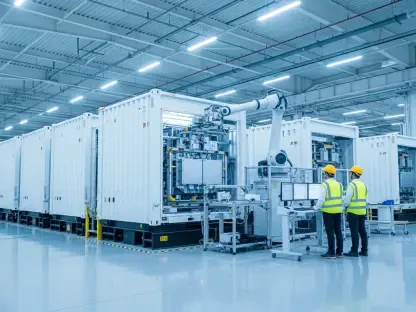Navigating the complexities of escalating energy demands while adhering to clean energy goals has become a pressing challenge for utilities. This struggle is marked by unprecedented large load requests, prompting utilities to devise innovative approaches to tariff structures. At the forefront is the development of clean transition tariffs, which offer a promising path forward by addressing the limitations of traditional large load tariffs. This trend is gaining considerable attention for its potential to alleviate infrastructure-related financial risks while advancing clean energy initiatives.
Evolution and Uptake of Clean Transition Tariffs
Insights from Data and Growth Patterns
Recent data indicates a noteworthy uptick in the adoption of clean transition tariffs, reflecting a broader shift toward sustainable energy practices. Across the industry, utilities report substantial interest in these tariffs, prompted by the increasing demand for clean, renewable energy sources. Statistically, the adoption of clean transition tariffs is outpacing traditional alternatives, signaling their growing acceptance as a viable solution. Credible reports from leading energy analysts highlight how these tariffs effectively align with both corporate and state clean energy targets, significantly influencing tariff structuring strategies.
Practical Applications and Case Studies
Real-world applications showcase how clean transition tariffs are actively shaping utility strategies across the country. Pioneering companies, like NV Energy, have already embraced these tariffs, facilitating direct connections between large load customers and renewable energy developers. Notable examples include Arizona Public Service and Duke Energy, both of which have integrated clean transition tariffs into their operational models to support sustainable energy growth. These case studies illustrate the practical effectiveness of such tariffs in redefining energy distribution frameworks, underscoring their role in promoting a cleaner, more resilient energy future.
Insights from Industry Experts
Prominent industry experts emphasize the transformative potential of clean transition tariffs as a strategic response to the current challenges faced by utilities. These tariffs, experts argue, mitigate financial risks by transferring them to independent power producers, thereby safeguarding shareholders and ratepayers alike. Thought leaders, including renowned energy consultants, further point to the broad implications of adopting clean transition tariffs, stressing their significance in achieving long-term sustainability goals. However, they also caution about potential hurdles in implementation, such as regulatory barriers and the need for coordinated investment strategies.
Prospects and Challenges in Clean Transition
Looking ahead, the future of clean transition tariffs appears promising, with potential developments set to shape the energy landscape significantly. These tariffs are expected to diversify and include more comprehensive renewable solutions, spanning beyond solar and wind to encompass emerging technologies. The anticipated benefits, such as reduced infrastructure costs and enhanced energy reliability, position clean transition tariffs as critical tools in fortifying energy grids against future demands. Nevertheless, challenges remain, particularly concerning equitable access and ensuring regulatory frameworks evolve in line with technological advancements to support this transition.
Summary and Forward-Looking Insights
In conclusion, the rise of clean transition tariffs signifies an innovative leap in utility management, poised to redefine energy distribution amid growing sustainability pressures. These tariffs offer a compelling solution by redistributing financial risks and fostering collaborations with third-party capital providers. As utilities continue to refine and expand tariff structures, proactive engagement with emerging trends and investments in versatile renewable projects will be pivotal for sustained progress. Embracing clean transition tariffs can play a crucial role in ensuring energy resilience and achieving broader clean energy objectives.









